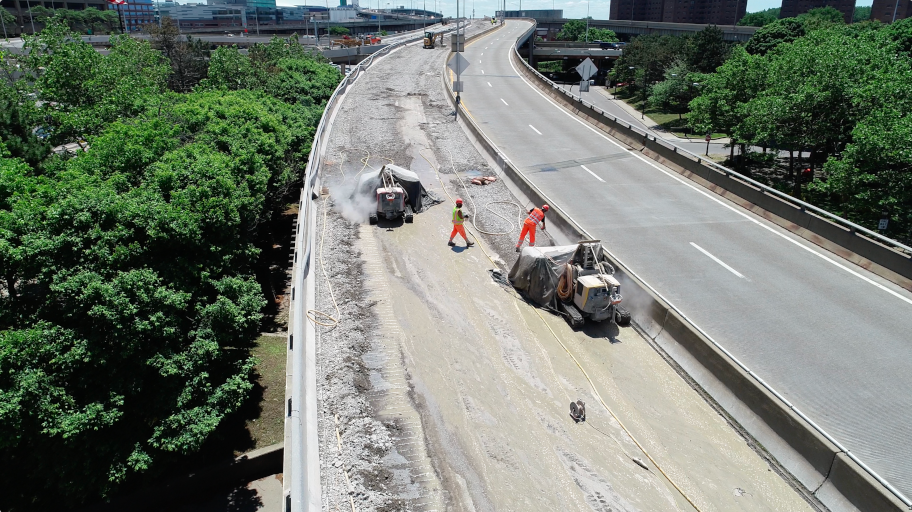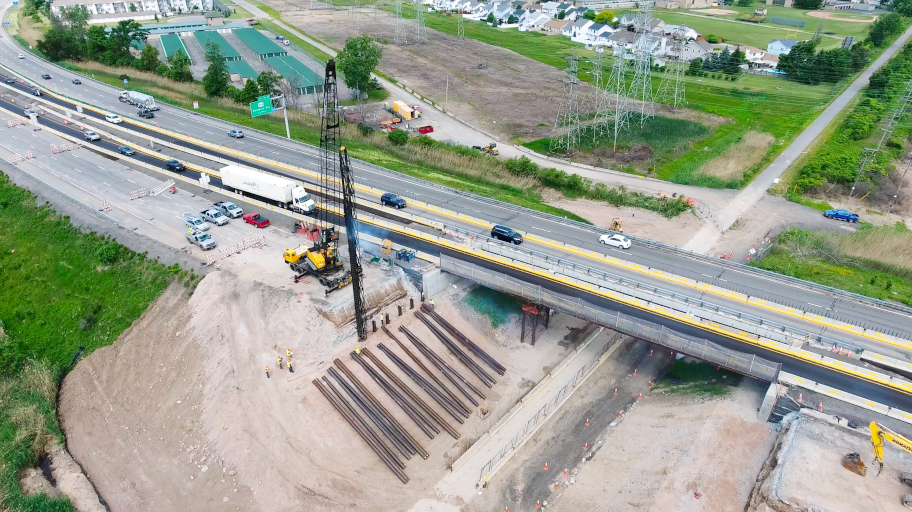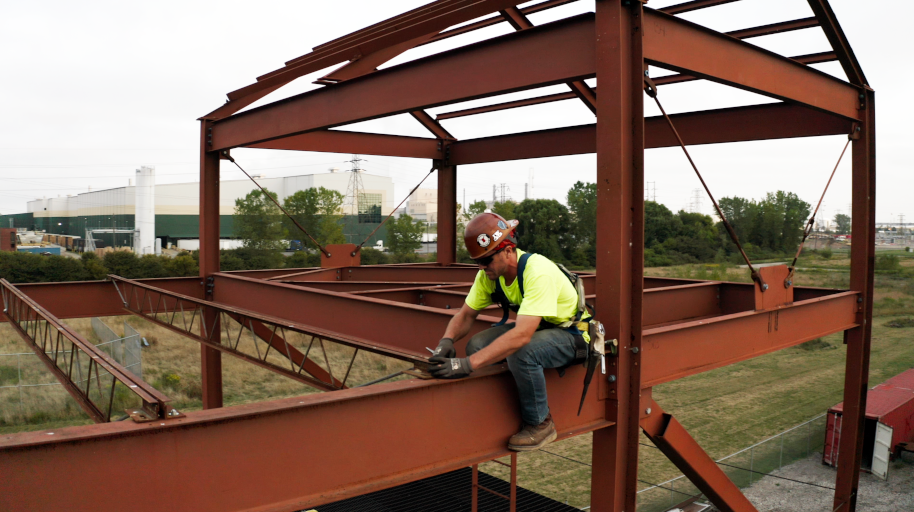
Imagine being a fly on a wall on a construction job site. You start to see two distinct groups of workers.
One group diligently working, in sync with each other, occasionally bantering, and focused on finishing a goal so they could leave the shift on time.
The other group appears lost and distracted. They are disregarding their safety equipment and personal protective gear. As well as, some people are talking on their phones in dark corners.
This group may have forgotten to calibrate their GPS and miss label the survey marks. They did not achieve the excavation track, and the dry run for the concrete pour depth was inaccurate. They do not want to say anything to their boss, so they turn their head and start working on the next task.
Lack of focus and project re-work affects the profitability or how much money the company can make on the project. The reason is because of efficiency, or the ability of their workers to work on time, follow directions, plan, and communicate with one another. With a lack of skilled construction workers and a lack of supply (i.e., material costs have increased and are hard to come by), construction companies are getting paid less to work on more complicated projects. Construction projects across the country are facing problems with efficiency. They could get projects done faster and cheaper if they made a few adjustments.
Read more to find out one of the solutions to slow construction projects.
How do you measure construction labor productivity?
After all, how do we know how much capacity one worker has compared to another? We’re not mass-producing toys or pieces of furniture.
Measuring construction productivity typically involves determining the work accomplished during a specific labor hour. This output measurement can be expressed in physical quantities, such as square feet, or in monetary value, such as dollars.
To monitor construction labor productivity, create a benchmark productivity level for a specific set of predetermined work tasks. Compare other projects against it.
This method can lead to a construction labor productivity index, which compares job-site labor productivity in a new set of work conditions. For instance, if a contractor records the quantity of gravel placed per hour on a typical project, this figure can be applied to future jobs to determine whether productivity is better or worse than the base. The construction labor productivity index, which represents the ratio of labor productivity under the new work conditions to the base construction labor productivity, shows the relative construction labor effectiveness of a project in a different set of circumstances (i.e., changes in weather, new worker, personal stress, long shifts, adapting to new technology).
What is an index? According to The U.S. Bureau of Labor Statistics, index measures total percent changes from a base period. Any time period can be used as the base period, but indexes are often set equal to 100 in the base period. This method makes it easier for users to compare changes over time by tracking the movement of the index up or down since its initial value.
However, when more than one index is included in a calculation—as is the case with construction labor productivity—all the indexes must have the same base period. This way, it ensures that any changes observed in the resulting construction labor productivity measure are due solely to changes in output and input (what’s changing around the worker) rather than differences in their respective base periods (the average time it should take a worker to complete a task).

What are the major reasons job sites are not productive?
-
Construction Labor Shortage: The demand for skilled workers is increasing (federal and state are releasing more projects) while the supply is decreasing (Baby Boomers are retiring). This circumstance creates a situation where the available workers are overworked, which reduces productivity.
-
Safety Issues: Construction sites are inherently hazardous. Accidents, injuries, and fatalities can result in lost work hours, delays, and increased costs.
-
Technology Adoption: Technology such as Building Information Modeling (BIM), drones, and 3D printing can streamline processes and improve efficiency. The lack of technology can result in lengthy procedures and errors in reporting.
-
Project Management: Poor project management can lead to delays, cost overruns and decreased productivity. If you have a project manager problem… you know what we’re talking about. Empower your project manager with tools and systems to track project changes and advancements better. Establishing metrics to talk about weekly goals is critical. These are called “key performance indicators (KPI)” and determine the health of a project weekly.
-
Communication: Enough said. You need to warn people of potential dangers and delays. Doing this daily, and even hourly, is necessary to ensure safety.
-
Material Management: The availability of materials, timely delivery, and proper handling can impact the productivity of construction workers.
-
Workforce Training: The training of construction workers is essential for productivity. Workers must be trained on new technologies, safety protocols, and best practices to improve efficiency and effectiveness.
-
Construction Labor Productivity Metrics: Construction companies need to measure and track construction labor productivity to identify areas for improvement. With accurate metrics, it is easier to identify inefficiencies and implement improvements. Create benchmark productivity levels using the index approach mentioned above.
Reach out to us if you have questions.
Other factors that will affect your baseline productivity on construction job sites:
-
Weather: Think about how wind, snow, and cold affect your workers.
-
Personal stressors: Family, health, age.
-
Environment: Loud, lack of materials, etc.
-
"New" factors: Technology, job site, management, employees.
Check out our other blog: 10 Tips for attracting and retaining the next generation of construction labor workers.

How to increase productivity on construction job sites?
-
Upskill your workforce: Use digital solutions like aQuiRe™ to make learning cheap and convenient for your company.
-
Work conditions: Make work conditions more comfortable for your contractors. Add heating or cooling elements, proper clothing, ventilation, etc.
-
Admin tasks: Ensure your workers aren't stuck on digital or admin tasks. Ask them how long emails and logging take them. Work with them on solutions to make their life easier.
-
Management and Organization: Be aware of ergonomics, noise, work hours, compensation, and other factors affecting your employees' mentality and performance. You are their biggest supporter.
-
Technology: Make your job easier and safer. Use technology to save money and time when available.
-
Expertise: Find mentors or other professionals who have been there to prevent mistakes that they have made. Encourage these relationships in your contractors' lives.
Check out the Top 10 safety training programs for construction labor workers.
Conclusion:
Construction companies face a range of issues that can cause construction labor productivity to increase or decrease. Giving your project manager proper metrics and measures to track is the key to understanding how workers are performing and where improvements can be made. The first step is creating a benchmark productivity level for a specific set of predetermined work tasks, like paving .25 miles of road. Then, compare your workers against each other and then to other projects. Your project manager should continually measure the construction labor productivity index in different work conditions. For example, your workers will work slower during a December blizzard than on a beautiful 65-degree day. Additionally, staying on top of skilled construction labor shortages, safety issues, technology adoption, project management, communication, and material management will help lead to productivity on construction projects.



